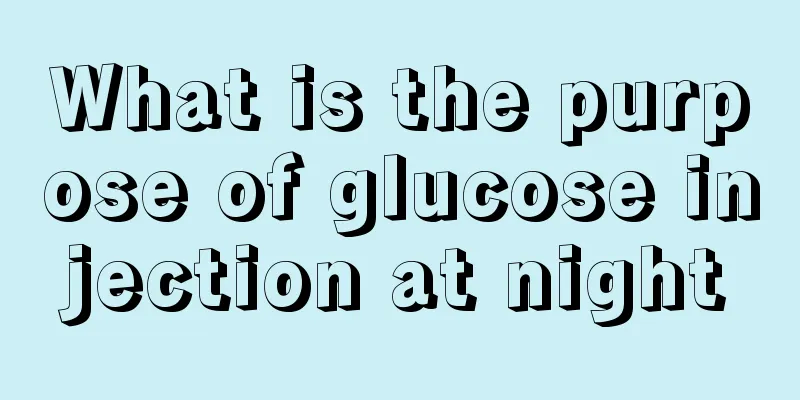What is the purpose of glucose injection at night

|
Glucose is an important basic substance needed by the body. It has many functions, among which providing energy to the body in a timely manner is its fundamental function. In modern life, people will consume a lot of physical strength when facing the torture of various diseases. At this time, timely replenishment is needed, and glucose is the most suitable one. The role of glucose is not only that. Let’s take a look at what glucose injection is for? Glucose injection, indications: 1. Replenish energy and body fluids; used for insufficient food intake or large amounts of body fluid loss caused by various reasons (such as vomiting, diarrhea, etc.), total intravenous nutrition, and starvation ketosis. 2. Hypoglycemia; 3. Hyperkalemia; 4. Hypertonic solutions are used as tissue dehydrating agents; 5. Prepare peritoneal dialysis solution; 6. Medication diluents; 7. Intravenous glucose tolerance test; 8. For the preparation of GIK (polarizing fluid). Dosage 1. To supplement heat energy, when patients eat less or cannot eat for some reason, they can generally be given 25% glucose injection intravenously and replenish body fluids at the same time. The amount of glucose is calculated based on the required heat energy. 2. Glucose is the most important energy supply substance in total intravenous nutrition therapy. In non-protein heat energy, the ratio of heat provided by glucose and fat is 2:1. The specific dosage depends on clinical calorie requirements. Depending on the amount of fluid replacement required, glucose can be prepared into different concentrations of 25% to 50%. Insulin can be added if necessary, with 1 unit of regular insulin added for every 5 to 10 grams of glucose. Since normal use of hypertonic glucose solution is highly irritating to veins and requires infusion of fat emulsion, large intravenous drip is generally used. 3. For severe hypoglycemia, 20-40 ml of 50% glucose injection can be given by intravenous push. 4. For starvation ketosis, in severe cases, 5% to 25% glucose injection can be given by intravenous drip. 100g of glucose per day can basically control the condition. 5. For isotonic dehydration, give 5% glucose injection intravenously. 6. For hyperkalemia, 10% to 25% injection solution can be used, and 1 unit of regular insulin can be infused for every 2 to 4 g of glucose to reduce serum potassium concentration. However, this therapy only allows extracellular potassium ions to enter cells, and the total potassium content in the body remains unchanged. If potassium removal measures are not taken, hyperkalemia may still occur again. |
<<: How soon can a newborn be taken out?
>>: How many quilts are appropriate for a newborn baby?
Recommend
Nasolabial fold malignant tumor, TCM treatment method
Malignant tumor of the nasolabial fold is a commo...
What does normal vaginal discharge look like?
Leucorrhea is a common secretion in women's v...
There are black spots on the belly
There are many common problems in life. We must u...
What does urea nitrogen mean?
The human body contains a lot of chemical element...
4 proven Chinese medicine prescriptions for treating lymphoma
During the conventional treatment of lymphoma, so...
Things to note for lung cancer patients after surgical treatment
Lung cancer is the most common primary lung malig...
Is the distal left humerus fracture serious?
The humerus is the largest bone in the upper limb...
Side effects of chemotherapy for brain cancer
Side effects of chemotherapy for brain cancer 1. ...
Can red rope ward off evil spirits?
In life, we often see people wearing red ropes. T...
Can prostate cancer be removed
Prostate cancer is a condition in which a maligna...
What is the reason for the crooked mouth? Can it be cured?
Many people have crooked mouths, most of which ar...
Symptoms of paroxysmal arrhythmia, these characteristics should be known
A very common type of arrhythmia is paroxysmal ar...
Is the Tillandsia poisonous?
Tillandsia is a common flower in our daily life. ...
Do I need to wash off calamine lotion?
Calamine is a very common topical medicine that h...
What is the cause of pituitary tumor attack
What is the cause of pituitary tumor? Pituitary t...









